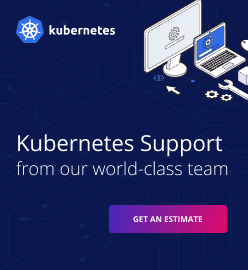Intel Addresses 43,000 Mobile Devices with OpenStack and Cloud Foundry
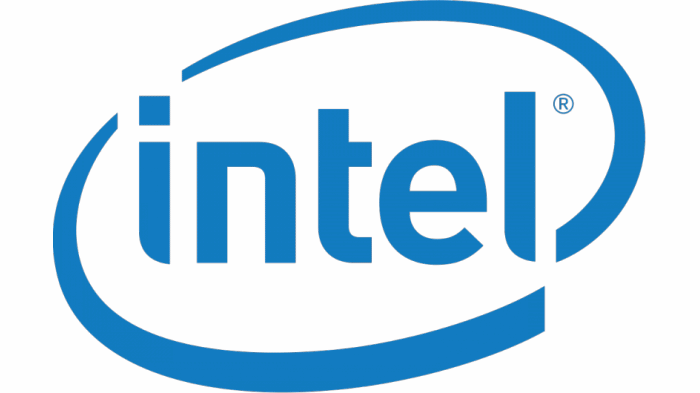
Major manufacturer: key component to build a massive private cloud, while moving in the direction of hybrid cloud.
- Creating on-demand build and hosting for custom apps
- Creating a preprovisioned, multitenant common platform
- Abstracting the hardware and software infrastructure supported by IT
- Ultimately, Intel would like to be able to go from idea to production in less than a day.
Meeting multiple challenges including:
- Creating a developer pilot programthat embraces multiple app development technologies
- Rapid app hosting with no server provisioning
- How to build scale massively while being super-efficient
OpenStack
Puppet
There are 147,000+ employee devices being provisioned.
The world’s largest semiconductor manufacturer
Intel has its own massive internal IT needs, and considers Cloud Foundry as a key component to meet them.
(Note: This use case is based on presentations by , IT Principle Engineer, Cloud Computing, Intel, and , Sr. Technical Member, Cloud Services Engineering at Intel.)
Intel’s journey to the cloud
Intel operates 64 data centers worldwide, with 80% of its servers now virtualized. It has standardized on open-source Cloud Foundry as its PaaS solution, after an evaluation process that began in 2012.
The company’s employees use more than 147,000 devices, including more than 43,000 handheld devices, with 57 mobile applications having been developed. Intel’s cloud journey embraces a private-cloud approach in which the company aims to benefit from cloud computing for its high internal-only workloads.
Internal demands and supply
Intel wishes to consume its own capacity before seeking external sourcing. It also cites the high switching costs due to interoperability among public-cloud providers as a reason to prefer private cloud.
Cloud-aware apps are a challenge for all types of cloud, the company acknowledges. However, its approach using Cloud Foundry as its PaaS provides dynamic, flexible, and scalable service delivery at reduced cost. Key aspects include:
- On-demand build and hosting for custom applications
- Pre-provisioned, multi-tenant, common platform
- Abstracted hardware and software infrastructure supported by IT
There are additional reasons behind the strategy, and a commitment to moving from an innovative idea to production service in less than a day, as shown in the graphic below.
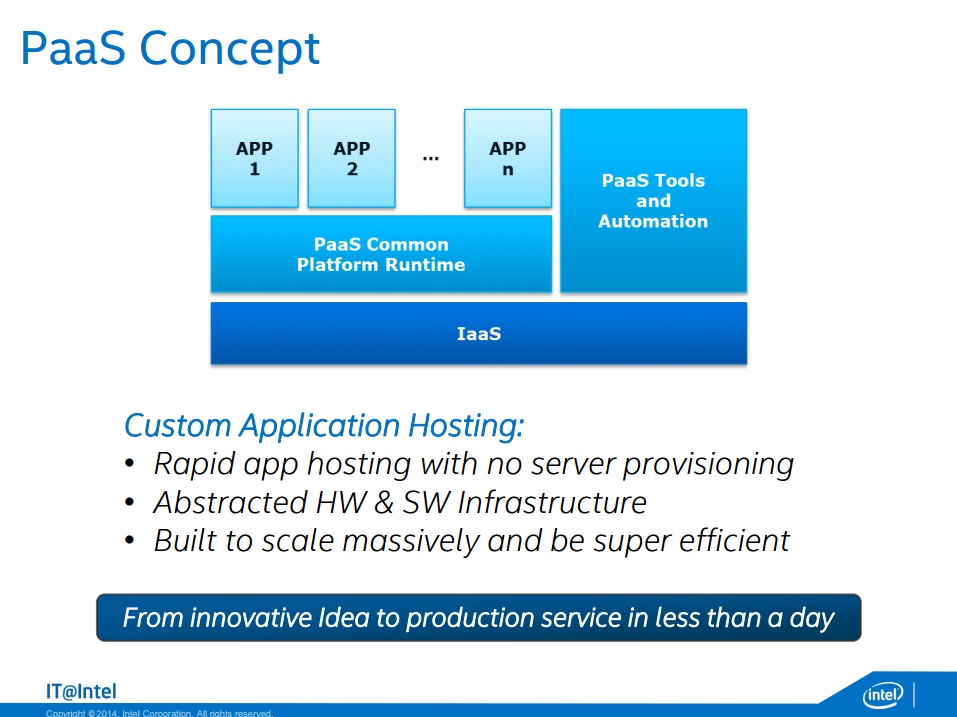
Cloud roadmap
Intel’s goal is to build a federated, hybrid cloud that will be interoperable and open. The company is working on automating as many tasks as possible, abstracting the complexity of creating complex systems from developers.
Ultimately, Intel would like to be able to go from idea to production in less than a day. The company is also building a unified control panel for monitoring and managing all cloud implementations, multiple clusters in various regions, etc.
Intel’s overall cloud stragey embraces the XaaS spectrum: notably, SaaS for large-scale, standard processes; and a common IaaS control plane. Its Enterprise Adoption Roadmap is shown in the graphic below.
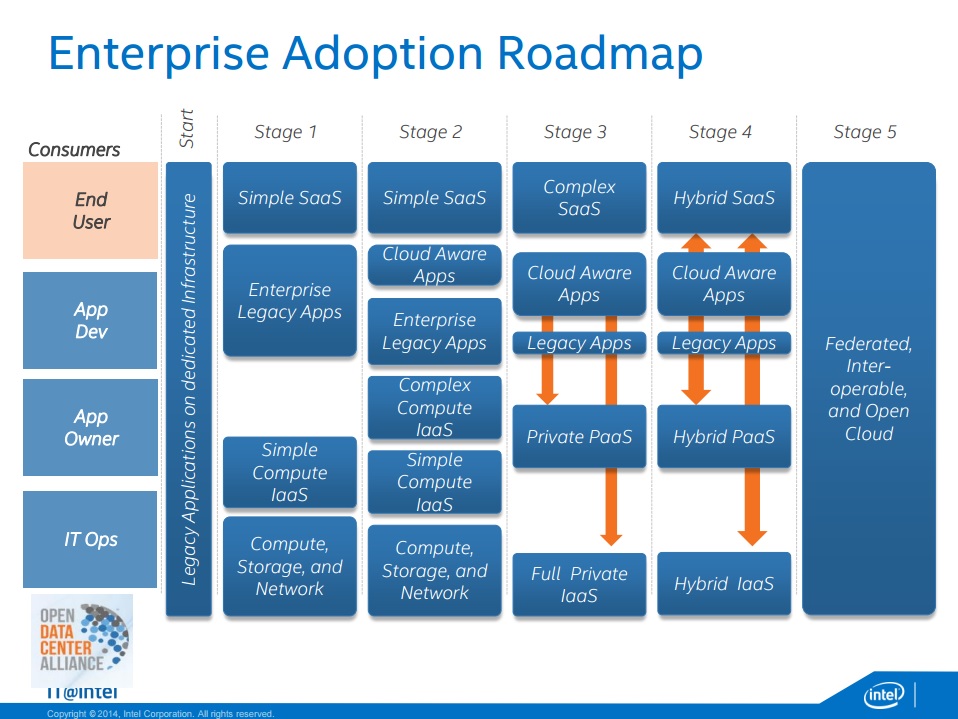
The key points
With Cloud Foundry, Intel took a Resource Utilization strategy in which it was determined to expand on its OpenStack IaaS success. It employed technical and user evaluations as part of the process of ultimately choosing Cloud Foundry. The company focused on three other vectors, with the following results:
- Agility. A huge potential to improve app landing time. Developers value in on demand, self-service
- Elasticity. Big improvement and even more with automated elasticity
- Design for Failure. Benefit of high availability within platform. More work to do on active/active and promoting cloud-aware app design
An Intel Developer Survey of more than 2,000 developers sought to understand developer segmentation, identify technology trends, explore PaaS demand and offer a pilot program.
The results validated the requirement to support high app development diversity, with .NET, Perl, SQL Server, Java, and Python all mentioned prominently in the survey results. There was also a high interest in databases (especially NoSQL), as well as interests in SOA, Business Intelligence, and Mobility.
Intel’s PaaS is deployed over OpenStack Havana. As noted above, there are 57 applications running on the platform. BOSH is the main tool used for deployment. Intel also uses Puppet, since there are some enterprise-level integrations in place.
The PaaS is available along with other resources through a portal, which provides a GUI for deploying and managing apps, creating and using spaces, etc. The CLI option is still available as well. Users can choose between IaaS and PaaS options depending on the level of control they would like to have over their infrastructure.
Additionally, provisioning looks like this, with the use of BOSH:
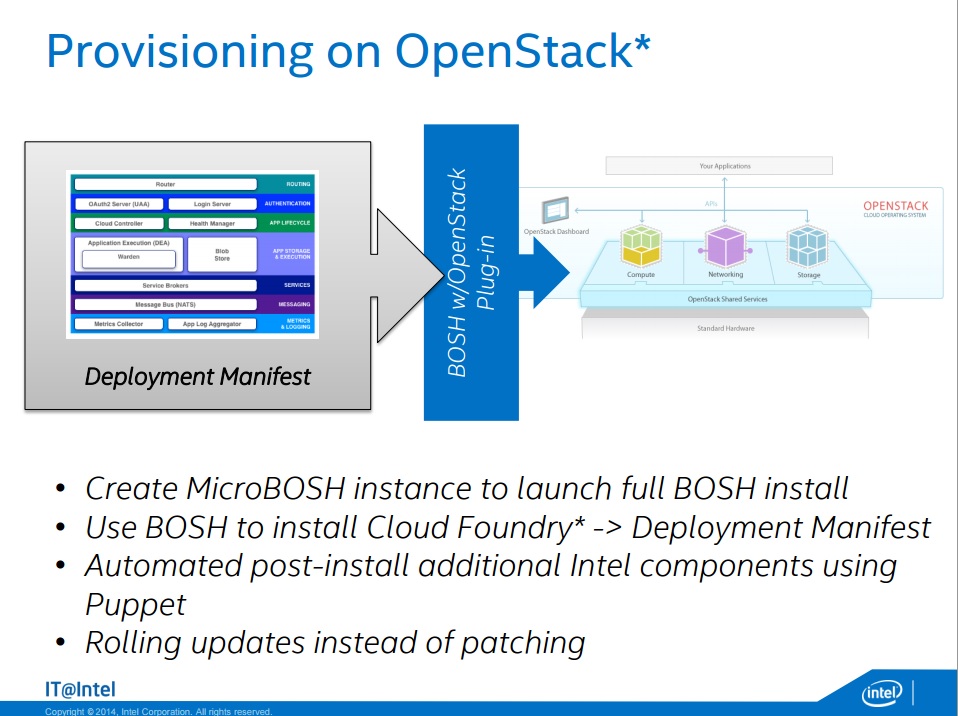
Developer survey and program
In the subsequent pilot program, developers sign up and create spaces, download tools or use a web portal, deploy apps in “one push,” and manage apps instead of infrastructure.
A usage study of 16 owners (with the 57 apps among them) found interesting results as well:
- 40% @ > 10 years experience
- 57% develop on next gen platform
- 67% utilize IaaS
- 68% had a goal of production landing
- 20% experienced deployment issues ranging from lack of education to need for additional services
- 100% say Cloud Foundry speeds deployment for them
Hybrid cloud direction
Intel is ultimately on a direction toward Hybrid Cloud. The company’s strategy emphasizes a few key points:
- Development of a smart orchestration layer
- The ability to move among clouds via policies
- Security, capacity and cost optimization
- Most apps to be exposed on the internet
- Expect app components to run across clouds
- Limited public cloud for special use cases
Intel will extend the value of enterprise private IaaS through the Cloud Foundry PaaS, which in turn accelerates application deployment and promotes cloud application design principles.
Related links
Here are some useful resources on GitHub on this topic:
Related videos
1) Catherine Spence, IT Principle Engineer, Cloud Computing, Intel appeared on a panel with James Watters at the Cloud Foundry Conference in 2013. Her comments begin at 1:12.
2) Catherine Spence also presented on this topic at the OpenStack Summit in Paris in November 2014.
I’m a huge, huge fan of Platform-as-a-Service…using OpenStack with Cloud Foundry, there’s a natural affinity there, and very healthy, vibrant communities. Catherine Spence, IT Principle Engineer, Cloud Computing, Intel
3) In this video from the SV CF meetup, Sachin Ashtikar uncovers some details about the role that Cloud Foundry plays in Intel’s cloud strategy (starting from 11:15):








